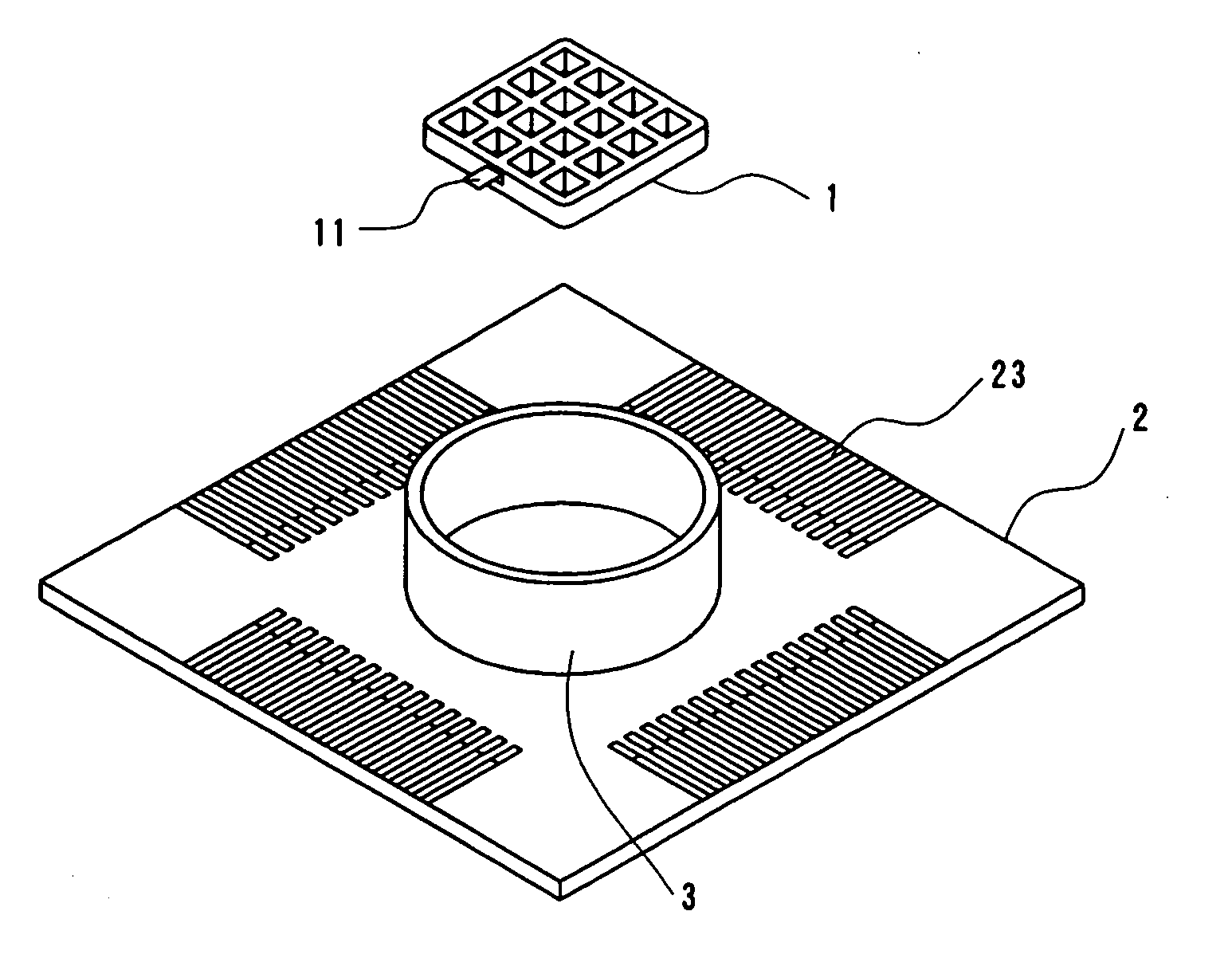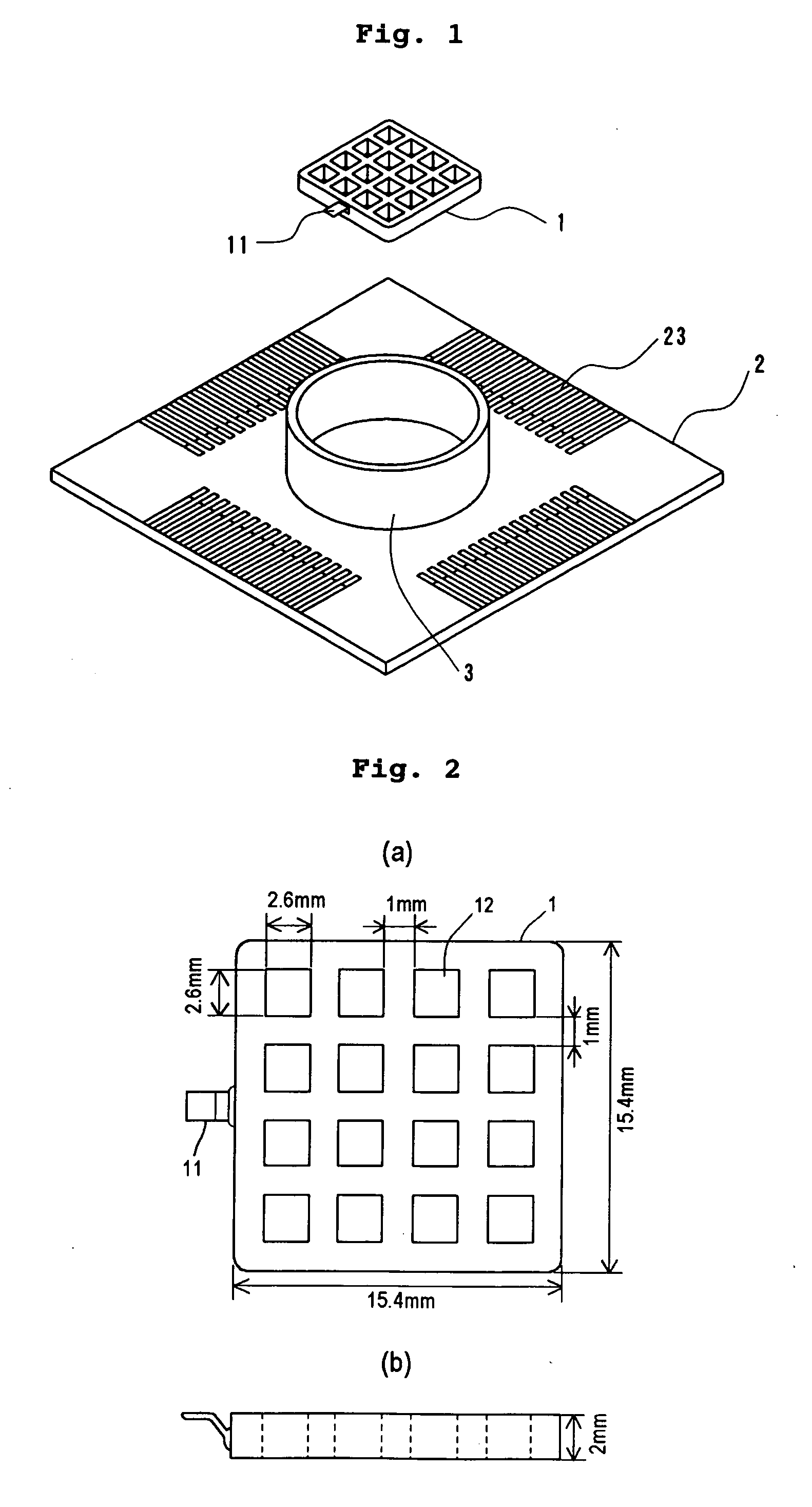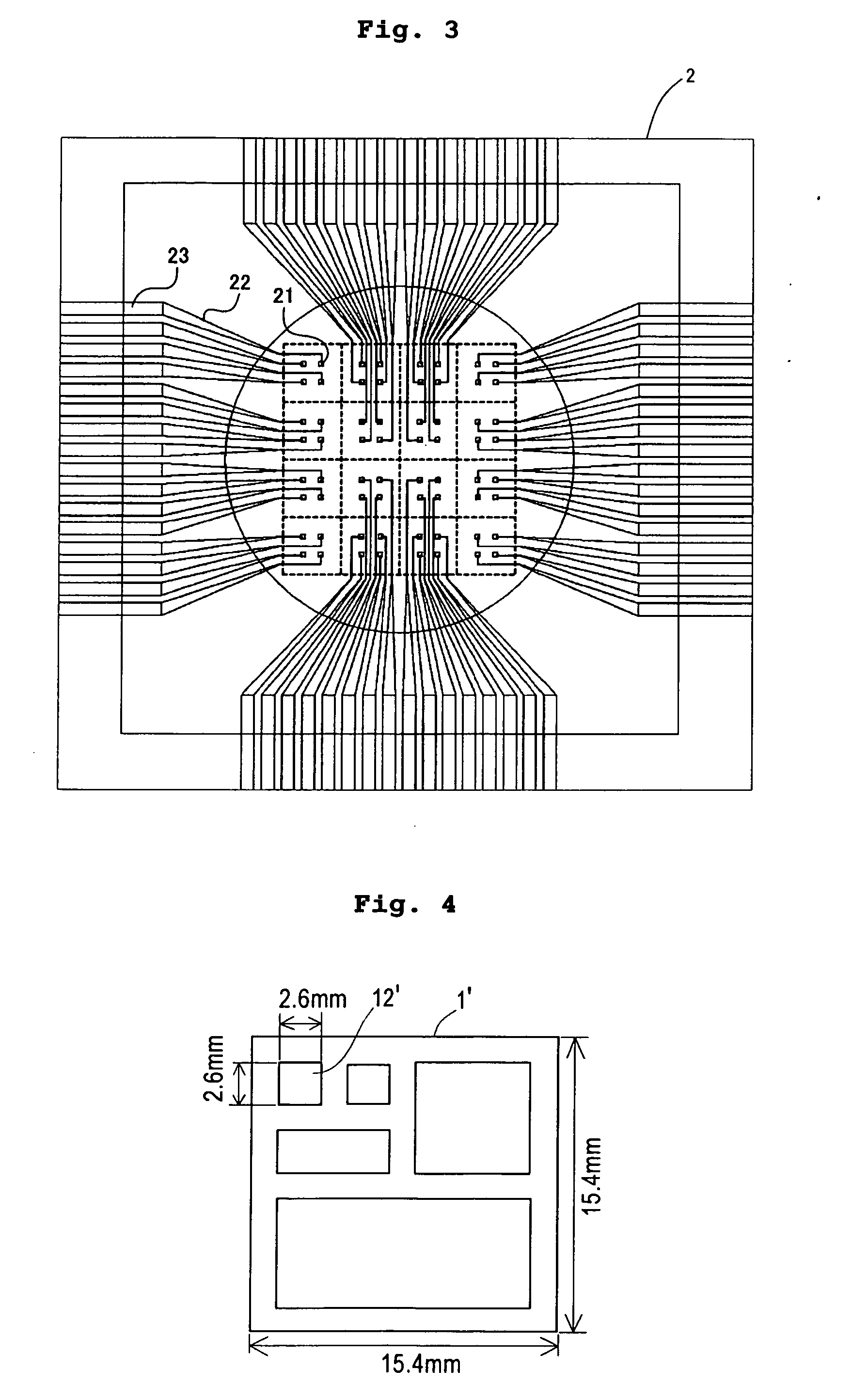Compartment-arrayed probe for measuring extracellular electrical potential and method of measuring pharmacological effect using the same
a technology of electrical potential and probe, which is applied in the direction of instruments, material electrochemical variables, biomass after-treatment, etc., can solve the problems of difficult to form a suitable reference electrode in the probe, inability to conduct a simultaneous measurement of electrical potential with respect to a large number of samples, and inability to conduct a large number of measurements under various culture conditions. , to achieve the effect of low resistance and not easily affected
- Summary
- Abstract
- Description
- Claims
- Application Information
AI Technical Summary
Benefits of technology
Problems solved by technology
Method used
Image
Examples
example)
(Example)
[0071] Hereinafter, the characteristics of the invention are further clarified with reference to the following example.
[0072]FIG. 5 shows a prototype of a compartment-arrayed extracellular electrical potential measurement probe for assaying the pharmacological effect on an organic neuronal network. The compartment-arrayed extracellular electrical potential measurement probe was connected to a commercially-available extracellular electrical potential recording system (MED-64 integrated system: manufactured by Alpha MED Sciences), and the electrical potential of the measurement electrode was observed, thus confirming the efficacy thereof.
[0073] First, four measurement electrodes and one reference electrode were disposed in a region inside each compartment on an electrode substrate, and an electrical potential measurement was performed. In this process, the measurement was performed under the state in which a culture medium was injected into the electrical potential measurem...
PUM
| Property | Measurement | Unit |
|---|---|---|
| thickness | aaaaa | aaaaa |
| thickness | aaaaa | aaaaa |
| height | aaaaa | aaaaa |
Abstract
Description
Claims
Application Information
 Login to View More
Login to View More - R&D
- Intellectual Property
- Life Sciences
- Materials
- Tech Scout
- Unparalleled Data Quality
- Higher Quality Content
- 60% Fewer Hallucinations
Browse by: Latest US Patents, China's latest patents, Technical Efficacy Thesaurus, Application Domain, Technology Topic, Popular Technical Reports.
© 2025 PatSnap. All rights reserved.Legal|Privacy policy|Modern Slavery Act Transparency Statement|Sitemap|About US| Contact US: help@patsnap.com



